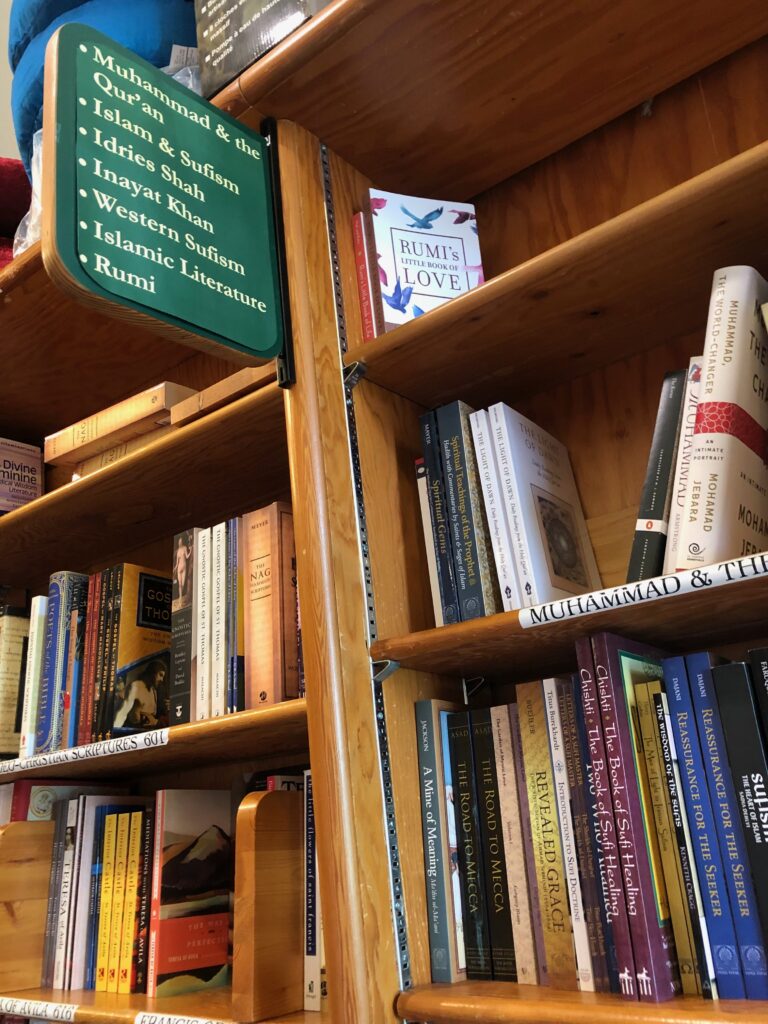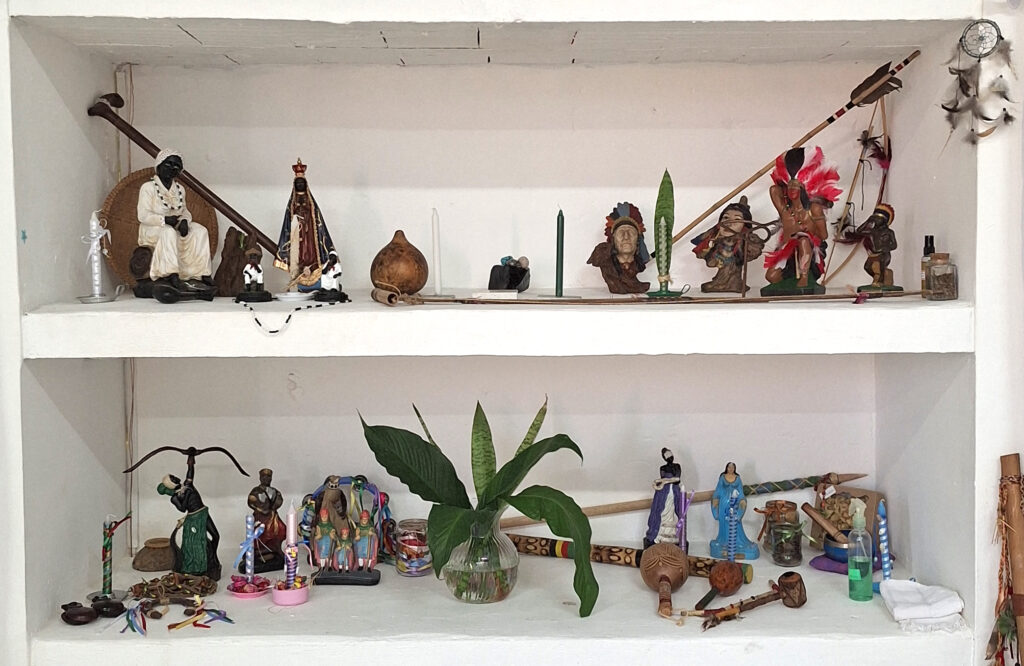By Cecilia Bastos

Connecting to a “more than human” universe (Pushkar, India 2008)
Historically, modern yoga blossomed from an initial globalisation, being both “Western” and neo-Hindu (Altglas 2007) in its bricolage of elements of medical therapy, Hindu asceticism, a type of “military gymnastics” and a new style of physical conditioning combined with breathing (Singleton 2005). This diversity does not only imply the presence of different traditions and worldviews, but involves a relativisation in which the bricolage makes sense to the practitioner. A creative movement of embodying values and esoteric elements is inscribed in different techniques and rituals that are interpreted through each practice and through the uses and meanings attributed by the practitioners.
Amid shared performances and rituals, these techniques introject values that are built in reference to the body. The fact that attention is paid to each action performed and each thought directed towards this action points to a dimension of knowledge of the mind. From this, new configurations of body construction emerge, in which subjectivity is emphasised (Woodhead and Heelas 2005). Practitioners turn to yoga not only because they believe it is good for health, but also because it consists of a process of self-transformation—often underlined by vegetarianism and concern for the rights of animals and the environment (Koch 2015). Those who are most committed seem to seek this change and adopt new attitudes that contribute to the formation of a “new” self (Lucia 2018; 2020).
The construction of a yogic ethos then takes shape in relationships with the community of practitioners, who build their identity through the adoption of new knowledge, value systems, diets, clothing and worldviews. A development that involves engagement based on a process of sacralisation of traditions, teachers and the community of practitioners. Their new patterns of speech and behaviour involve the creation of a new lifestyle and habitus (Bourdieu 2017), indicating something that can be likened to a religious conversion, transforming their subjectivity in a gradual process. The transformation of the self often leads to a kind of yogic “devotion”, a continuous process of acceptance of situations and events, situated in a perspective in which each action is seen as a form of meditation that enables the participation of a more comprehensive agency—in the form of consciousness or “cosmic order” (Bastos 2022).
For many, the concepts of karma and reincarnation offer a way of looking at their trajectories as part of a larger plan or “cosmic order” through which the person is seen as inherently connected to a “more than human” universe (Ganguly 2018, 1039). The reinterpretation of one’s life paths is a way of identity formation that is significantly recreated through interconnections with the guru, with nature and with others. Their choices can be understood as the result of a metaphysical schema, in which narratives of transformation are part of the reconstruction of the self as relational and connected.
Recent research with practitioners challenges the notion that spiritual practices are based on radical individualism, as argued for example by Suzanne Newcombe (2005) and Colin Campbell (2013), and shows that such practices do not lead to isolation or disengagement, but are closer to concepts of participation, empowerment and holism. According to Flood, the self in yoga traditions “is built through ritual and the development of a tradition-specific interiority” that is not individual “in the contemporary, de-traditionalised sense (characterised by fragmentation and alienation)” (2006, 12); for the practitioner, truth subjectively becomes appropriation in the sense of how a person knows the world and embodies truth, which means that through the repetition of these performances, truth becomes the appropriation and embodiment of tradition. Another tension lies in the ideal of free choice, which is also challenged by the talk of people who were “called” to India to practise yoga or to a particular guru (Warrier 2005), while at the same time narratives of connection to a previous life or to karma transcend analytical dichotomies such as those of agency and structure, individual and society, free choice and determinism, subjectivity and objectivity (Wood 2010).
Observing how these technologies of the self (Foucault 2005) have become popular in recent years and are beginning to occupy more and more socio-cultural spaces such as schools, universities, prisons, hospitals and the like, I consider this an opportune moment to think about these notions. The objective of my research is to discuss the complexity and scope within the dimensions of identity related to the body and emotions, based on a case study of yoga and meditation practitioners. By analysing the process of reflexivity and rationality among interlocutors, I seek to understand how these reflexive processes constitute and legitimise the pursuit of self-knowledge experienced by them. The aim of my research is thus to examine the dynamics of appropriation of these worldviews and the processes of production and transmission of meanings inherent in these practices.
References
ALTGLAS, Véronique (2007). The Global Diffusion and Westernization of Neo-Hindu Movements: Siddha Yoga and Sivananda Centres. Religions of South Asia 1, n. 2, p. 217–37.
BASTOS, Cecilia (2022). Individualism in Spirituality? A Close Look at Vedanta Students and Yoga Practitioners in Rio de Janeiro. International Journal of Latin American Religions 6, n. 2, p. 404-419.
BOURDIEU, Pierre (2017). “Habitus.” In Habitus: A Sense of Place, edited by Bourdieu, 59-66. London: Routledge.
CAMPBELL, Colin (2013). A New Age theodicy for a new age. In: Heelas, Martin & Woodhead (Orgs) Peter Berger and the study of religion. New York: Routledge, p. 73-84.
FLOOD, Galvin (2006). The Tantric Body: the Secret Tradition of Hindu Religion. London: Tauris.
FOUCAULT, Michel (2005) The hermeneutics of the subject: Lectures at the Collège de France 1981–1982, v. 9: Macmillan.
GANGULY, Tuhina (2018). Connecting Their Selves: The Discourse of Karma, Calling, and Surrendering among Western Spiritual Practitioners in India. Journal of the American Academy of Religion 86, n. 4, p. 1014–1045.
KOCH, Anne (2015). Competitive Charity: A Neoliberal Culture of ‘Giving Back’ in Global Yoga. Journal of Contemporary Religion 30, n. 1, p. 73-88.
LUCIA, Amanda (2018). Saving Yogis: Spiritual Nationalism and the Proselytizing Missions of Global Yoga. In: Brown; Yeoh. Asian Migrants and Religious Experience: From Missionary Journeys to Labor Mobility. Amsterdam: Amsterdam University Press, p. 35-70.
LUCIA, Amanda (2020). White Utopias. Oakland: University of California Press.
NEWCOMBE, Suzanne (2005). Spirituality and ‘Mystical Religion’ in Contemporary Society: A Case Study of British Practitioners of the Iyengar Method of Yoga. Journal of Contemporary Religion 20, n. 3, p. 305-322.
SINGLETON, Mark (2005). Salvation through relaxation: Proprioceptive therapy and its relationship to yoga. Journal of Contemporary Religion 20, n. 3, p. 289-304.
WARRIER, Maya (2005). Hindu selves in a modern world. Guru faith in the Mata Amritanandamayi Mission. London & New York: Routledge.
WOOD, Mathew (2010). The sociology of spirituality. In: Bryan Turner (ed.) The sociology of religion. Wiley-Blackwell.
WOODHEAD, Linda and HEELAS, Paul (2005). The spiritual revolution: Why religion is giving way to spirituality. Oxford: Blackwell.
#
Cecilia Bastos is a fellow researcher at the Centre for Advanced Studies in Social Sciences in the Humanities and Social Sciences at Friedrich-Alexander-Universität, Germany. She was a postdoctoral research fellow in Social Anthropology at the National Museum/Federal University of Rio de Janeiro (UFRJ) from 2016 to 2022. She holds a PhD in Social Sciences and is the author of the book “In search of spirituality in India: the meanings of a modern pilgrimage,” released in 2016.
___
CAS-E blogs may be reprinted with the following acknowledgment: “This article was published by CAS-E on November 22nd, 2023.”
The views and opinions expressed in blog posts and comments made in response to the blog posts are those of the author(s) and do not necessarily reflect the views and opinions of CAS-E, its founders, its staff, or any agent or institution affiliated with it, nor those of the institution(s) with which the author is affiliated.








